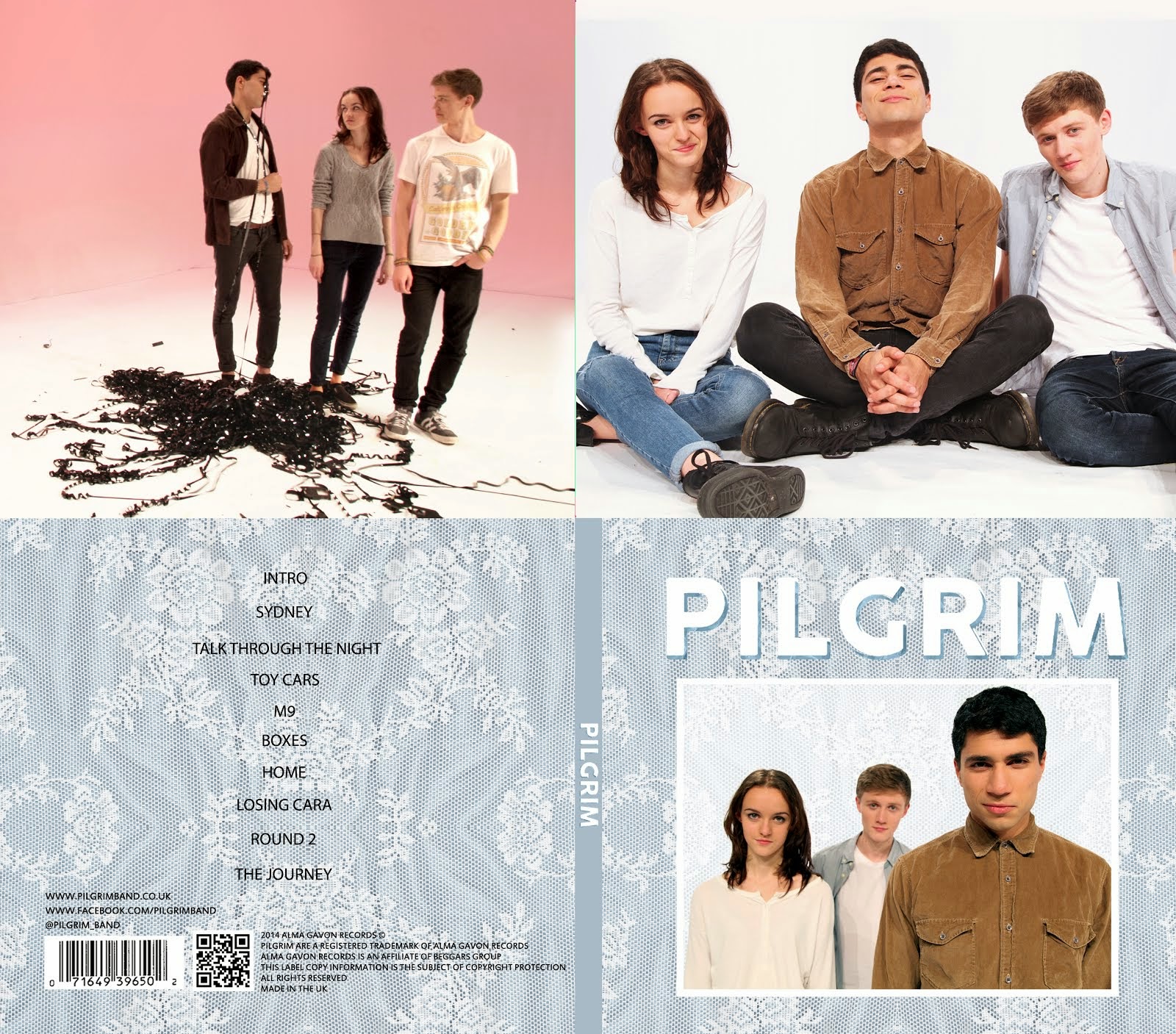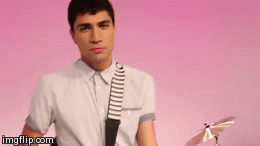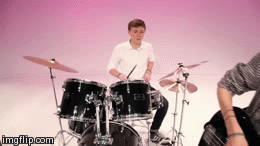Target Audience
Primary Audience - indie fans of all ages
 We chose this group as our primary audience as we are an indie band and so this audience seemed appropriate. Age isn't much of a barrier in the indie genre - people of all ages attend indie gigs and festivals, and so we kept this primary audience fairly wide to extend our reach as much as possible whilst still keeping the audience small enough for a real core fan base.
We chose this group as our primary audience as we are an indie band and so this audience seemed appropriate. Age isn't much of a barrier in the indie genre - people of all ages attend indie gigs and festivals, and so we kept this primary audience fairly wide to extend our reach as much as possible whilst still keeping the audience small enough for a real core fan base.
Consumption Habits
The younger end of this target group (16-24 year olds) will listen to music on websites such as YouTube, Soundcloud or Spotify. They may also illegally download tracks from sites such as uTorrent. The older end of the age group (30+) will have more disposable income and so will be more likely to buy the CD or single. Across the whole primary audience, people will be inclined to buy the vinyl also, as there has been a surge of vinyl purchases, especially from younger indie fans. The entire target group will also buy gig tickets to see the band live, as they take their music very seriously and will want to experience the band as much as possible if they are invested in the band image.
The younger end of this target group (16-24 year olds) will listen to music on websites such as YouTube, Soundcloud or Spotify. They may also illegally download tracks from sites such as uTorrent. The older end of the age group (30+) will have more disposable income and so will be more likely to buy the CD or single. Across the whole primary audience, people will be inclined to buy the vinyl also, as there has been a surge of vinyl purchases, especially from younger indie fans. The entire target group will also buy gig tickets to see the band live, as they take their music very seriously and will want to experience the band as much as possible if they are invested in the band image.
Secondary Audience - British 16-24 year-olds
Consumption Habits
This group will either stream music through sites such as YouTube, Soundcloud or Spotify, or they may illegally download music from sites such as uTorrent. They are less likely to be buying tickets to an indie gig as they won't be as invested in the music and the band.
Tertiary Audience - all music lovers
Tertiary Audience - all music lovers
Our tertiary audience is extremely wide. We hope that, because the main messages from our band are very universal, lots of music fans will be able to appreciate it.
Uses and Gratifications
When making creative decision regarding our three artefacts, we almost always referred to Katz & Blumler's theory of 'uses and gratifications'. This states that there are a handful of key reasons why audiences consume any type of media products. Below is how this has been applied to an existing media text ('Cape Cod Kwassa Kwassa' by Vampire Weekend) and how we have applied it to our own music video.
Audience Feedback
According to Stuart Hall, different audiences (or even individuals within specific audiences) will interpret (decode) a media text in different ways for various reasons. Whilst there is always a dominant interpretation of the text - in our case, a sense of nostalgia and looking back on our childhood - there are always other ways that audiences can decode texts - negotiated decoding and oppositional decoding. In our case, this may come across as a message of anger towards our childhood memories. Due to these different ways of decoding messages, audience feedback is essential throughout the course of the project.
Construction
Throughout the course of us constructing our three texts, we received regular feedback, mainly from our classmates, many of whom are indie fans and so fall in the category of our primary audience. They are also of an age at which the values and messages of the video will resonate most strongly in them, and so will be able to give the most focused feedback.
In our first draft, Mahalia thought that the above shot looked odd, in that the camera movement and revealing of Gavin didn't look natural and wasn't pleasant to watch. Gavin quite liked the shot, and so we got feedback from classmates, who also thought the movement in the shot wasn't natural. Therefore, we replaced the shot with the shot below. We felt that this shot was a lot smoother and more natural.
When constructing our digipak, we initially planned to use the picture below on our front cover. We felt that this picture represented our playfulness as a band and the direct address made us seem approachable.
However, the general feedback that we got was that the image wasn't serious enough for a front cover as it made us just look like three friends and not a stylised band. We decided instead to use the image on an inside panel, and instead asked for feedback for the below picture for the front cover - the feedback for which was much more positive.
To fix this, we decided to add the same image that appears on the sliding panel on the home page to the tour page, to make it more visually appealing.
Final Product
Music Video
We made a survey using Surveymonkey to widen our audience feedback to our secondary and tertiary target audiences, as well as providing for a wider spread of results. Below is the embedded survey:
Below are some important trends that we found in the survey:
1. The majority of participants understood the genre to be indie.
Having said that, some people understood the genre to be pop. This may be because of the crossovers of genre that people listen to, or because of the bright colours used in our video, giving it a pop-like feel.
2. The majority of participants understood the themes to be about fun and friendship.
Unfortunately, not many people picked up on the theme of nostalgia, although we did get some responses to this question that seemed to understand this such as 'looking back at your childhood and about friendship'.
3. The bright background colours were successful and enjoyed by viewers.

Digipak
We didn't use a survey on Surveymonkey for the album cover - instead, we took a few one-to-one surveys.
 |
| one participant looking at the album cover |
1. The personality of the band comes across effectively in the digipak. The participants regularly used phrases such as 'laid-back', 'fun', 'approachable' and 'friendly'.
2. The indie genre comes across. Some participants also got a sense of folk or 'folk-rock', possibly because of the lace texture.
3. The colour-scheme works effectively with the personality of the band to create a strong sense of band identity.
4. One comment we got was that there could be more information on the digipak, such as who the songs were by, lyrics, or band information for people who didn't want to go on the website to find it. Whilst we wanted to keep the digipak quite simplistic, in hindsight, we could have perhaps included a brief summary of the band and what we represented and where we originated.
Website
As with the album cover, we conducted one-to-one surveys for the website also.
 |
| a participant looking at the website |
1. The personality of the band was described as 'fun', 'quirky', 'down-to-earth', 'approachable', and 'friendly'.
2. The genre was always described as some type of indie or indie rock.
3. All our participants gave our website a 5/5 for interactivity.
4. Most of the participants commented on the fact that the home page doesn't feel cluttered, despite having a lot of content on it, possibly due to the use of boxes for each 'post'.
5. The idea of a vintage feel was also picked up on by most people, and the colour-scheme complimented the bands personality.
Overall, I think our audience feedback in the early stages of our planning and construction helped us to fine-tune our products to appeal strongly to our target audiences, meaning feedback after the products were finished only strengthened this.














No comments:
Post a Comment